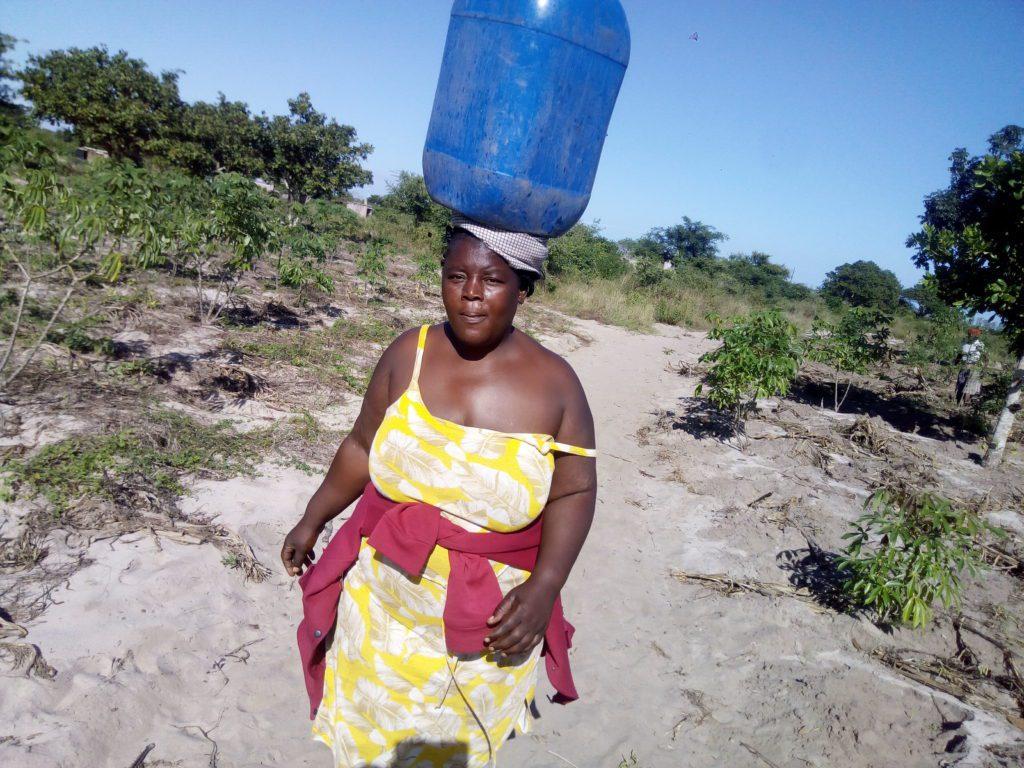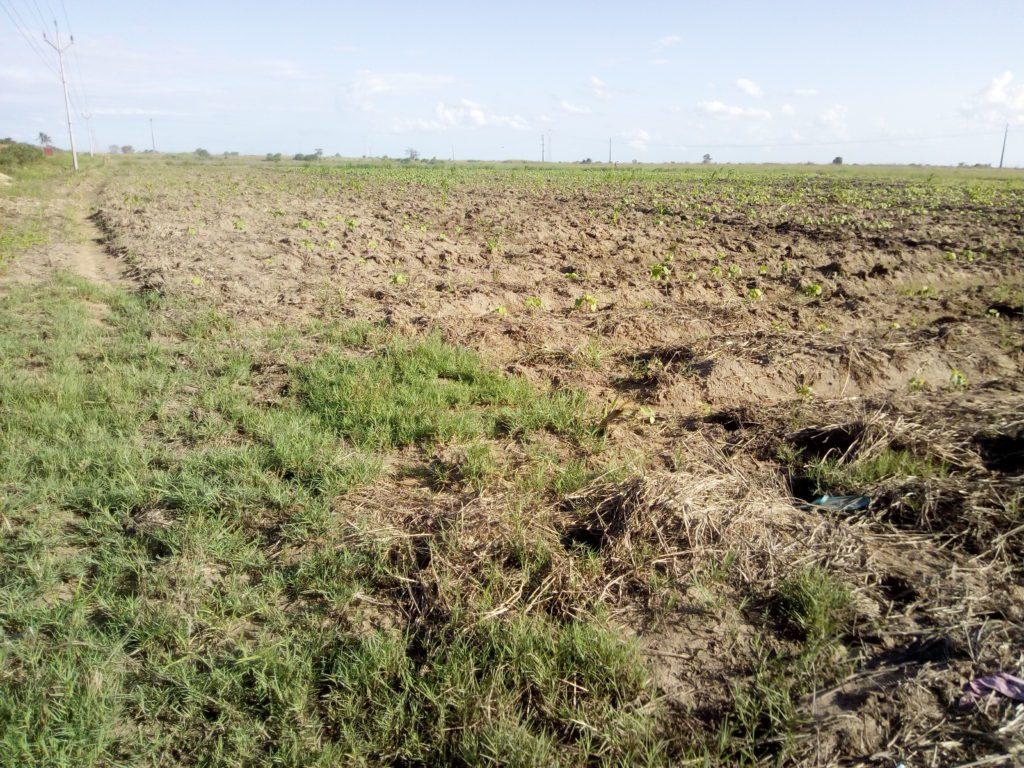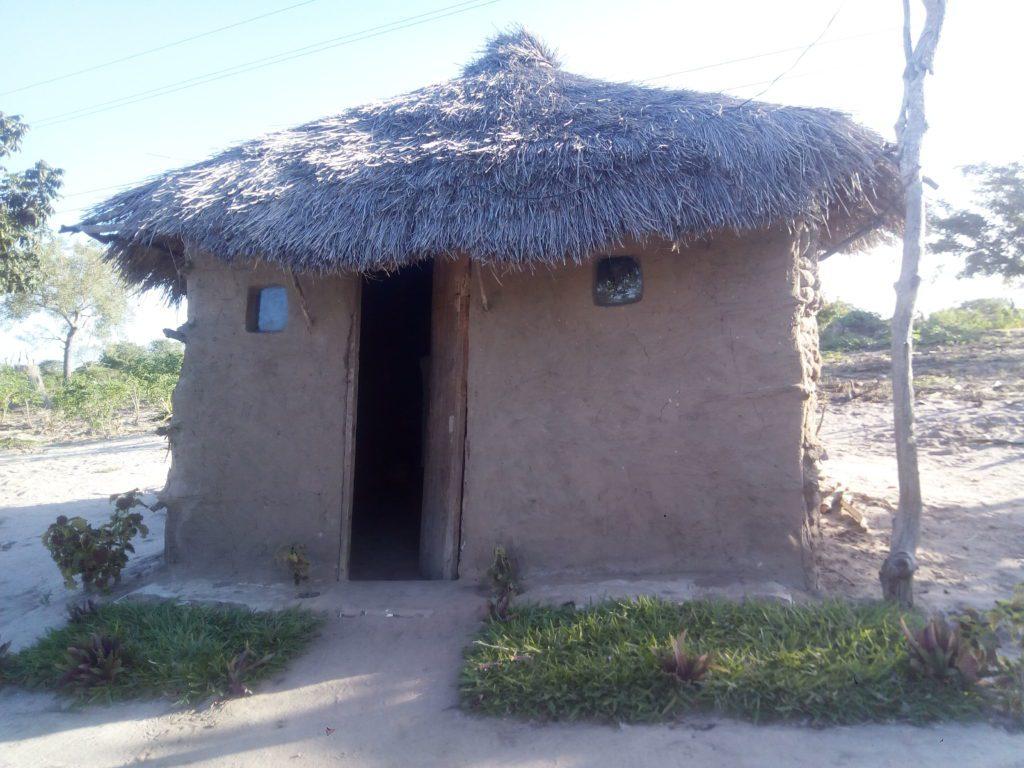
CHOKWE (Mozambique) Twenty-two years on, scars of Mozambique’s worst floods still haunt Gilda Muhate, a 60-year-old widow living with her five grandchildren. Their parents died in the 2000 floods in Chokwe City, located about 250 kilometres north of Mozambique’s capital city Maputo.
Gilda Muhate has survived two consecutive floods of the year 2000 that killed over 700 and another one in 2013 that displaced 56,000 people. As a result, Gilda and other 500,000 displaced flood victims were evacuated to Chihaquelane village, a resettlement centre established by the local government about 30 km from Chókwè in Gaza Province to accommodate flood survivors.
“I came here because of the floods, first in 2000, then again in 2013.” She paused. “In 2013, flood-displaced us again. We lost everything, properties, crops and our animals,” She regretted.
Previously, Muhate relied on farming for her livelihood, but it was destroyed by flood. Although the government has allocated her a plot to farm at Chihaquelane village, where she now calls her home, she cannot cultivate because she is too old. Muhate abandoned farming and started cooking bean pastries every morning and sold them at a nearby roadside market to get money to pay fees for her grandchildren, who travel (6km) every day.
Chokwé district is an agricultural region with an area of 2,466 square kilometers and nearly 200 000 inhabitants. Chokwe town, the economic capital of Gaza Province, is prone to flood as it is located along the Limpopo River, the second largest African river that drains the Indian Ocean.

Lack of government support.
At Chihaquelane Village, flood victims gradually return to Chokwe despite the flood’s threats and warnings. Salvador Fernando Matuassa, Chihaquelane Village secretary, blamed the government for neglecting the flood victims and not developing the area.
“Hunger and lack of other basic needs drove people back to Chokwe. Only a few remain, but the bulk is gone. Since its arrival more than twenty years ago, the camp has no water nor electricity,” explains Matuassa
Due to limited government support, key infrastructures like hospitals and schools essential to these communities’ survival are still unavailable. Matuassa says that the flood-affected victims complain about underdevelopment, but nothing happens. This forces them to return to their flood-prone homes around and within Chokwe to reclaim their fertile lands for food production and other income-generating activities despite flood risks and constant warnings.
“There is no secondary school in the area despite residents building three classrooms as their contribution towards an agreement with the government, who promised to build three more,” Matuassa added.
Margarida Flavio, another flood victim, has been evacuated twice from the flood-prone Limpopo River banks but preferred going back to continue with her agricultural activities because the land is fertile and productive.
“They (government) told us to vacate, but I don’t have money to build a new home. They made several promises, but nothing happened, so I prefer to die in flooding waters than in hunger,” she said.
Like in many sub-Saharan African countries, long dry spells, severe flooding, and coastal storms have increased in frequency.
Watch how drought has sunk kenyan marginalized people to poverty
In march 2019, Cyclone Idai left a trail of destruction in Zimbabwe, Malawi, and Mozambique, with Mozambique the worst hit.
While five tropical storms and cyclones have battered Mozambique’s northern coastal areas since the start of this year, villagers from the southern areas fear the uncertainty of alternating floods and drought invites.
An artisan fisher, Casimiro Cossa, said climate change has affected the availability of water and increased the flooding and drought events in the region.
“In 2000, I fled from rising water to Chihaquene, but I returned to Chokwe again. Here I make a living catching and selling fish.” Cossa explained, “We want government projects that can contribute to improving the livelihoods of poor rural farmers in this region by providing additional knowledge and practical actions,” he said.
The effects of the disaster are still visible. Agricultural land whose topsoil was swept away by soil erosion is now infertile. Matuassa says, “People plant but yield nothing because the land the government gave to the victims is unproductive. We can only grow cassava and beans here,” pointing to yellow and drying maize.
The Chókwè Irrigation Scheme, located in the Limpopo River Basin, has seen declining crop yields mainly due to soil salinization and other practices, including poor water management.

Effort to rebuild
To rebuild and restore livelihood in the flood region, reconstruction of Mozambique’s flagship tourism town of Chokwe city began early this year. Juvencio Pedro Novela, a Public Works official at Chokwe District Services for Infrastructure (DPS), says government plans to build resilient houses.
“One thing is that we must make sure that public works and infrastructures meet a certain quota in terms of materials, construction methods”, Novela explained.
While at the Chihaquelane resettlement center, Chokwe district administrator Eceu Muianga say that the government is trying to build infrastructure that provides essential services like electricity and water.
However, the agriculture-rich Xai Xai city Mayor, Emidio Xavier, says that despite establishing a committee on disaster risk management, nothing still seems to work.
Although Xavier attributes the flood event to the people constructing along the river banks, unattended clogged or destroyed canals, he agrees that the city needs to improve its monitoring system and implement the right projects on time.
Mozambique became a global success story of post-conflict economic recovery in southern Africa after a 16-year crippling war that ended in 1992. The war cost almost two million lives two decades earlier, brought the economy to its knees, and destroyed much of the country’s infrastructure, roads, railways, and administrative posts.
Starting from this challenging base, Mozambique has seen average annual economic growth rates of five per cent since 1995 but remains extremely vulnerable to climate variability and change on the back of this commendable progress.
